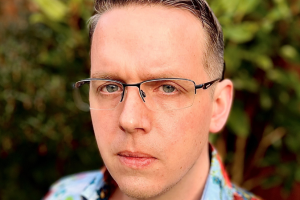Johann van Zyl, CEO and Co-founder of specialist dementia care provider, Fortava Healthcare, explores how leadership blind spots are driving talent out of care—and why we need a fresh approach to developing and supporting leaders
Before entering the health and social care sector, I’d built multiple businesses—some soared, others flopped spectacularly. Looking back, I’ve realised something uncomfortable: my worst failures didn’t come from bad ideas. They came from overconfidence. I was so sure they’d succeed, so convinced the strategy would deliver, that I ploughed ahead. I trusted KPIs over people. I ignored red flags. I thought I was leading—but really, I was creating blind spots.
When confidence becomes a liability, everything can look perfect on paper—detailed plans, sharp KPIs, focused execution. But I didn’t stop to ask: where is this leadership style actually taking us? I mistook silence for agreement. I overlooked stress and burnout. I assumed people understood the vision just because I’d explained it once. I underestimated how power dynamics can silence honesty. And when things started slipping, I finally asked questions. The feedback was sobering: “I felt unheard. Burnout stayed hidden until I got sick. But the warning signs were there—no one asked.”
The cost of blind spots in care isn’t just theoretical. The data is stark. Nearly two-thirds of UK social care professionals are on the brink of burnout. Over half feel their services are overwhelmed. More than a third are considering leaving the sector altogether. NHS staff are 50% more likely than the general workforce to suffer work-related stress. If we think this isn’t happening in our own services, we’re likely not seeing it—or worse, we’re not being told.
The gap between leaders and their teams often goes unnoticed. I used to think I was a good boss. I paid well. I cared. But I was too busy to truly connect. I rushed conversations. I assumed my managers “got it” because they didn’t complain. Micromanagement? Another blind spot. We trust our home managers with vulnerable lives and multimillion-pound budgets—but question who they appoint as a Senior Nurse. What message does that send?
Leadership culture starts with you. If you’re too busy to walk the floor, your team thinks you’re too busy to care. If you don’t listen, they stop talking. If you avoid conflict, issues fester until they become irreversible. We avoid tough conversations thinking we’re being kind—but kindness without clarity breeds chaos. And when managers start falling apart, it’s often because no one supported them early enough. The most dangerous leadership blind spot is thinking you always know best. We hire talented, thoughtful people for both skill and cultural fit. Then we ignore their ideas because they don’t match our own. True leadership means being okay with not having all the answers—and inviting challenge anyway.
Is your door really open? We tell our teams it is. But when someone walks through, are we actually present? Are we making eye contact, closing the laptop, listening without judgment? Or are we distracted, defensive, half-engaged? A door isn’t open if it’s hiding behind vague feedback, rushed check-ins, and cold KPIs. Because when we miss the warning signs, we don’t just lose productivity—we lose people. But when we lead with curiosity and humility, we build something different: a culture where it’s safe to speak up, safe to challenge, and safe to say when something’s not working.
Leadership doesn’t start in the boardroom. It starts on the shopfloor. Blind spots aren’t a flaw—they’re human. The difference between a good leader and a great one lies in what you do once you recognise them. So take that walk. Ask the questions. Listen for what isn’t being said. Because in care, what we don’t see can hurt people. But what we choose to notice? That’s what defines us.







